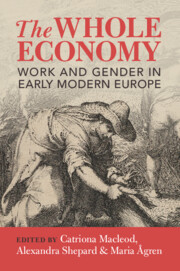3 - Agriculture
Published online by Cambridge University Press: 09 June 2023
Summary
Early modern Europe was predominantly rural and agriculture was the most common form of production. Yet women’s contribution to agricultural work is relatively neglected in studies of women’s work and remains an area of discussion and disagreement among historians. This chapter sets out to tackle misconceptions around women’s agricultural work. It does so first by critically examining the main areas for debate; secondly by offering a survey of women’s work in different parts of Europe; and finally through two detailed case studies (of Norway and south-west England). The case studies not only highlight women’s contribution to agricultural work in detail but also suggest a range of research approaches to uncovering women’s work. We find that women’s work in agriculture was often substantial and was varied and adaptable. For instance, in coastal Norway and some mountainous regions women did the majority of agricultural work because men were absent working elsewhere; in eastern Europe women’s labour was as important as men’s; in south-west England women contributed about a third of labour required in agriculture; while in some economies, such as central Spain in the eighteenth-century, women were largely absent from agricultural work because they could earn more from rural textile production.
Keywords
- Type
- Chapter
- Information
- The Whole EconomyWork and Gender in Early Modern Europe, pp. 84 - 114Publisher: Cambridge University PressPrint publication year: 2023

